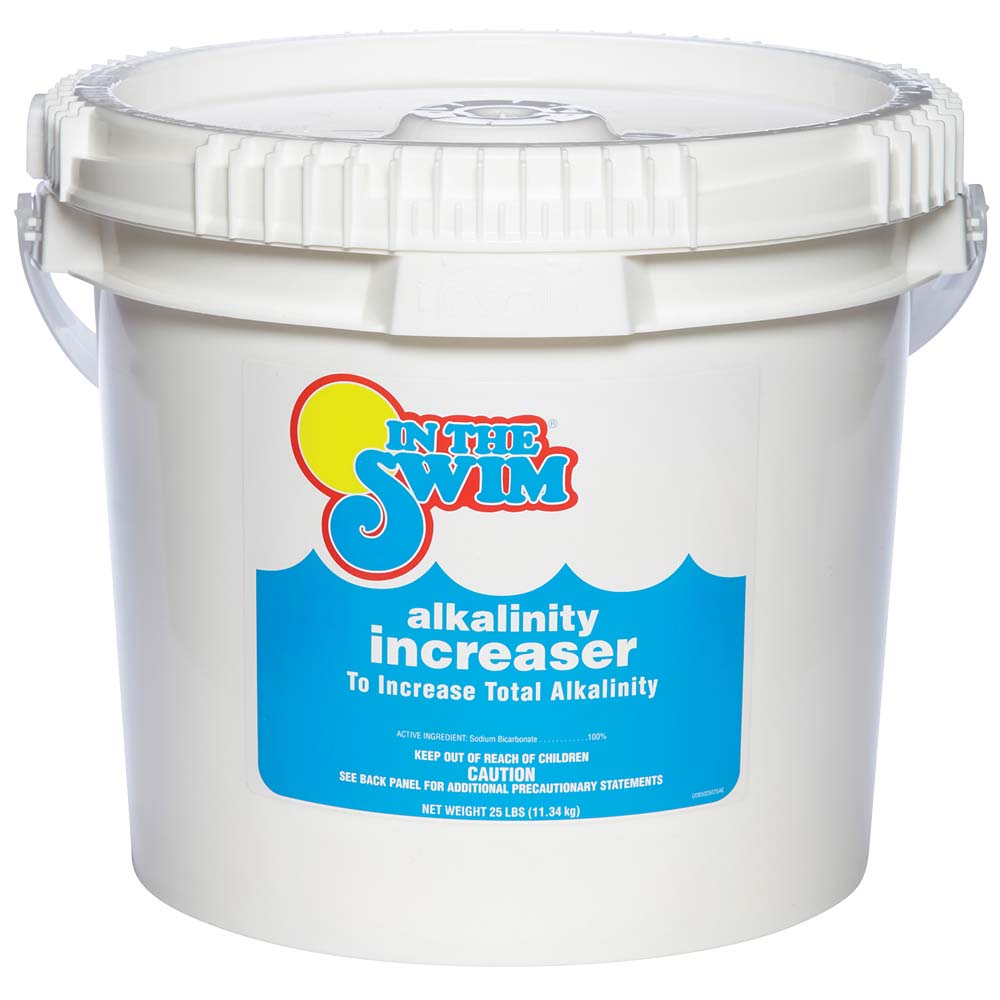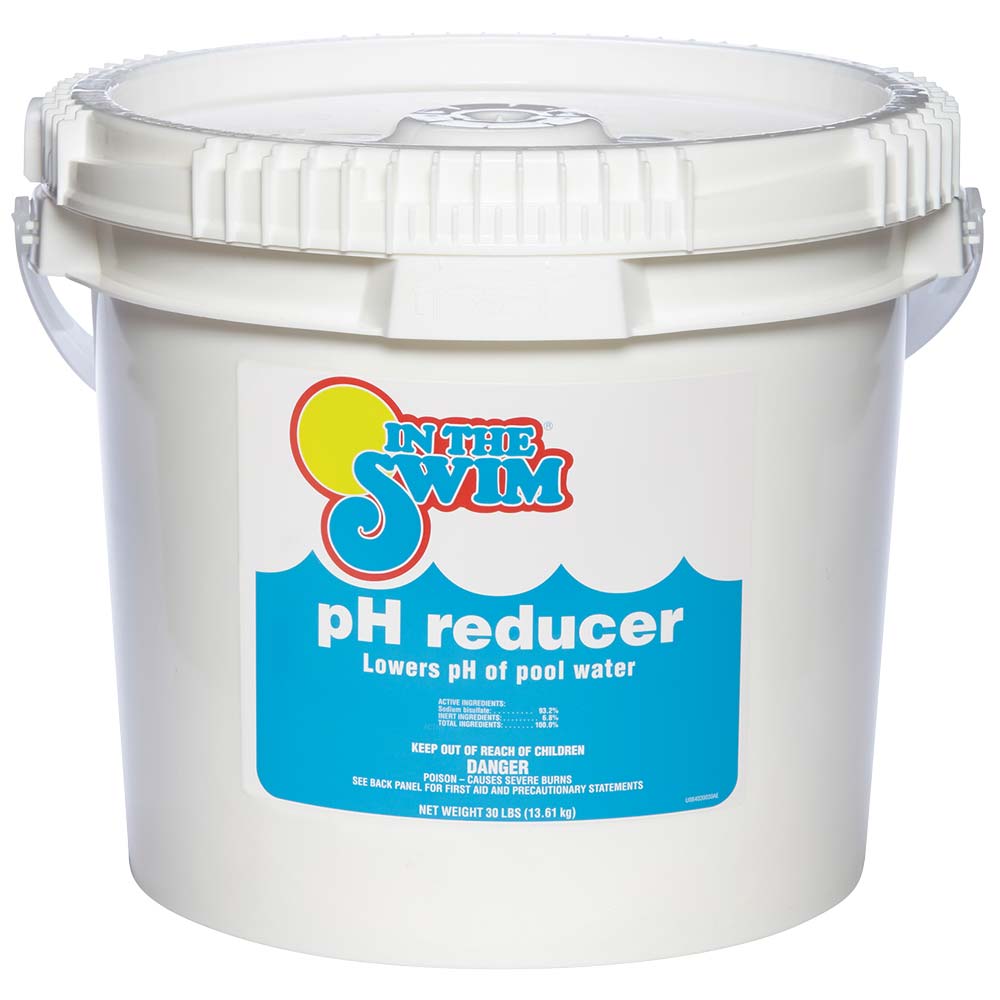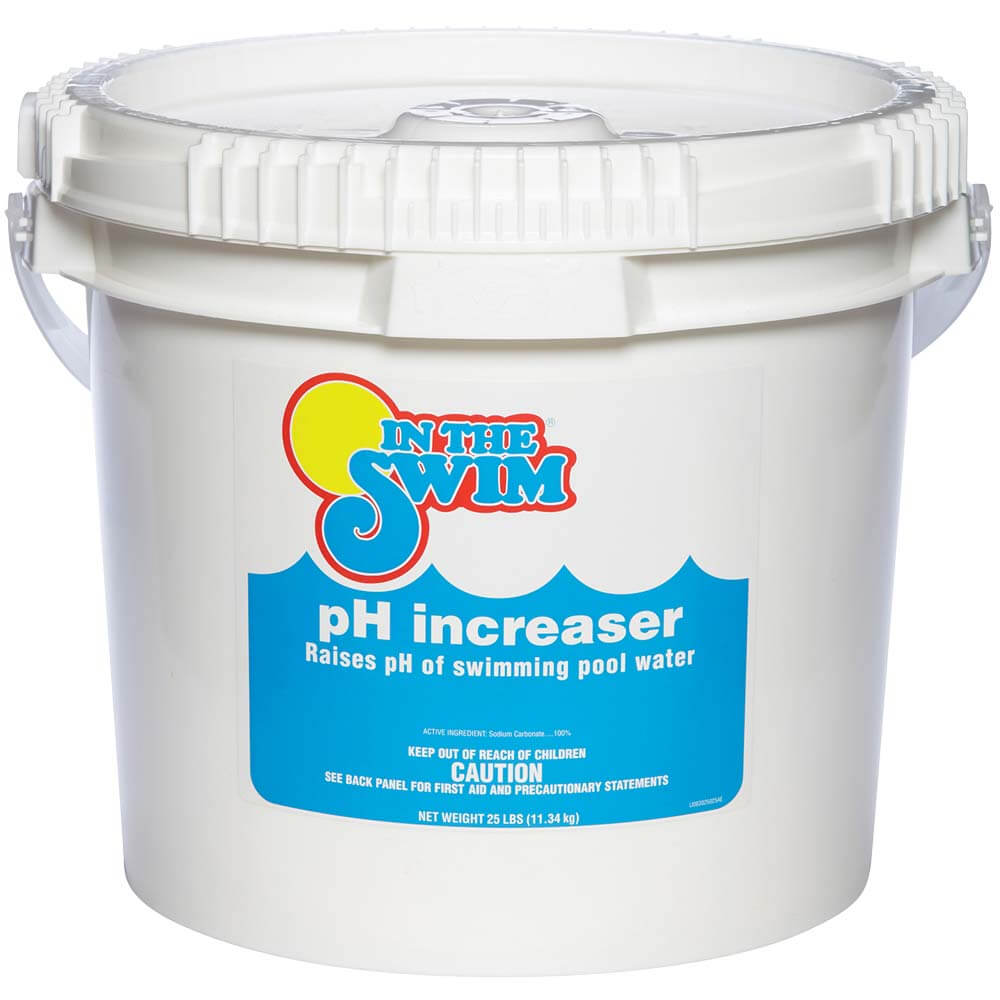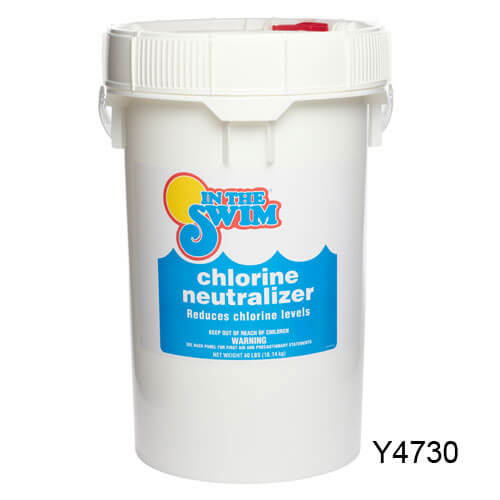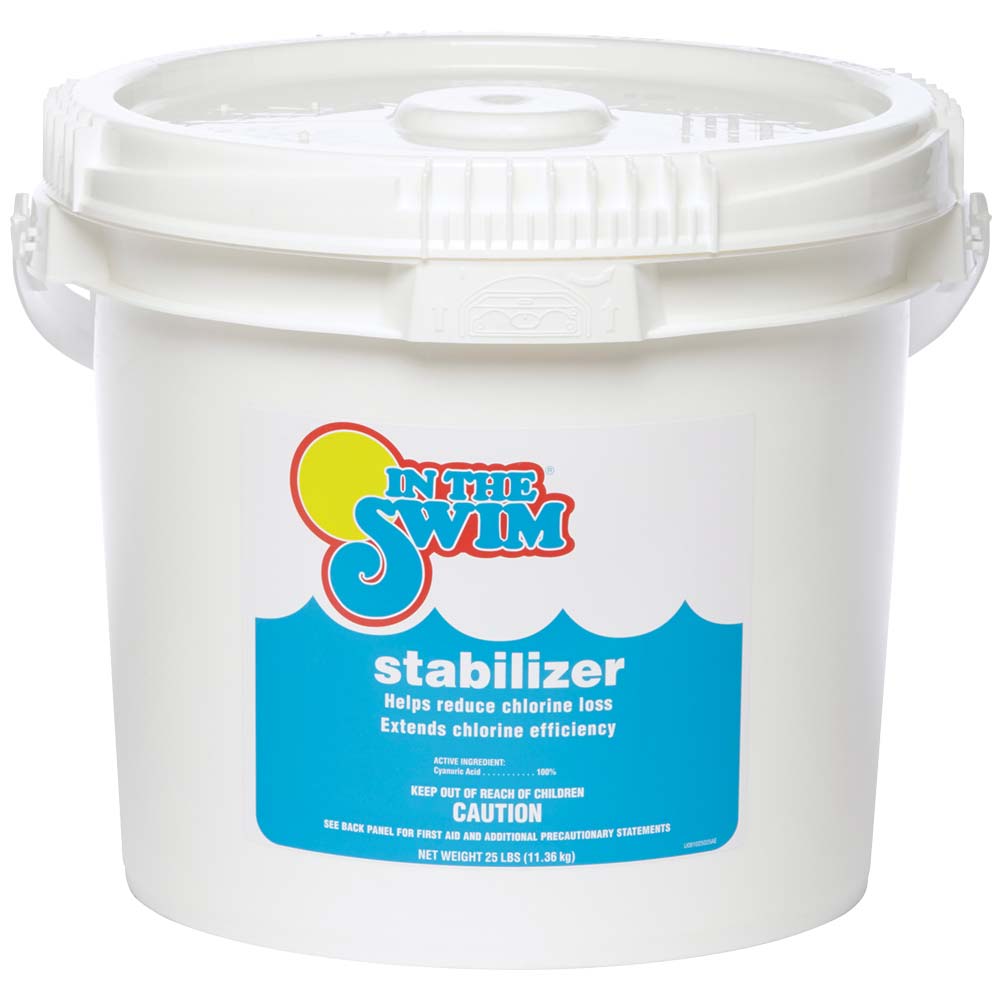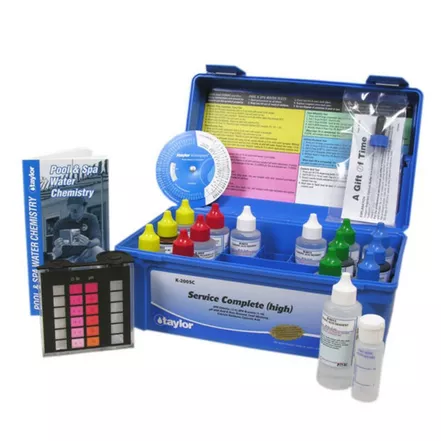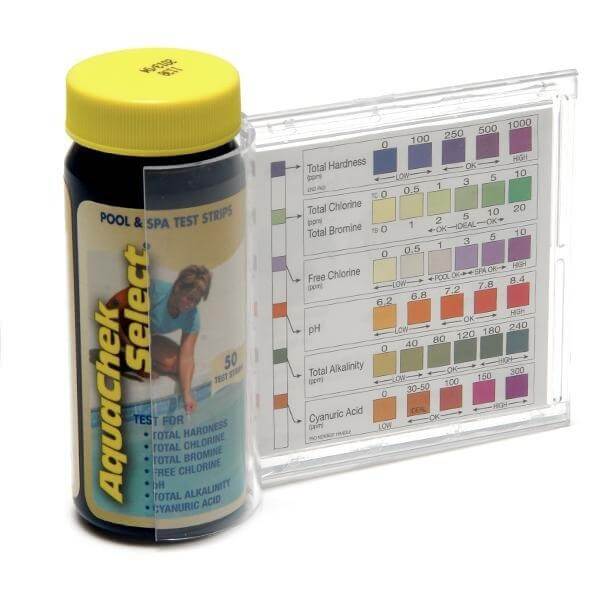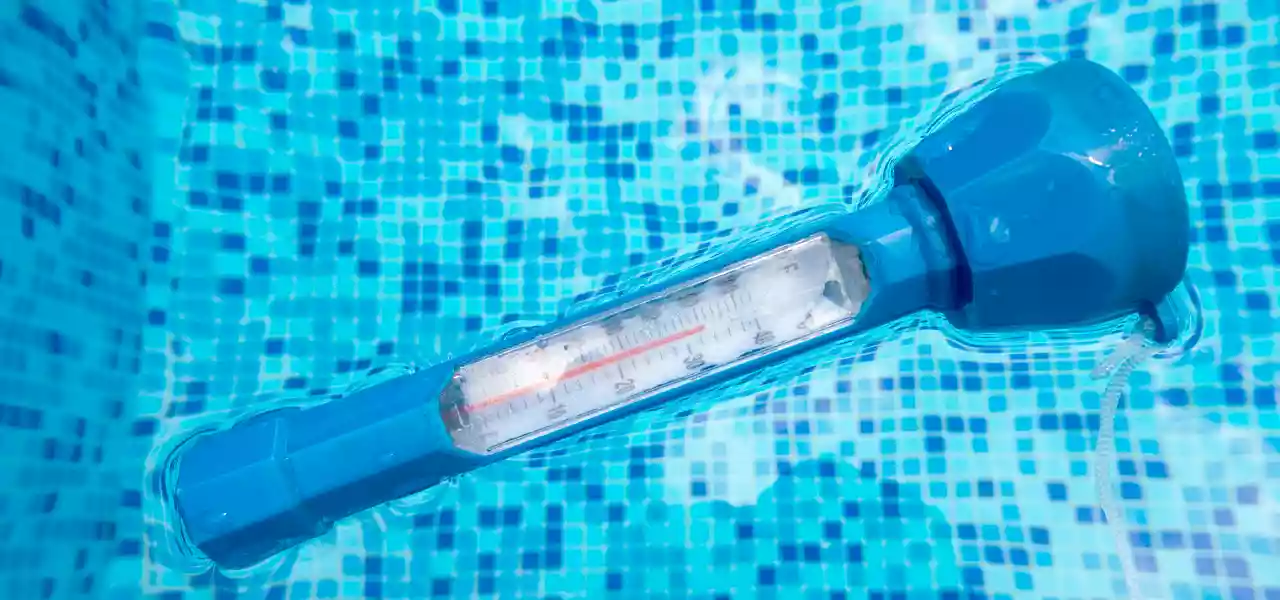
I was surprised to recently discover that although there seems to be a “Dummies Book” for every topic under the sun, there is no Pool Care for Dummies book.
Maybe I can get a book deal! Until I can secure a publisher, let’s start here with what could be chapter 4 – Pool Chemicals for Dummies.
There are literally hundreds of swimming pool chemicals on the market. Many are obvious as to what they do, or why and when they are used, but many are not so clear.
Today’s guide then, is a Glossary of Pool Chemicals, divided into categories, with a description of what, when and why you may have a need for shelling out your hard earned cash.
There are 9 kinds of pool chemicals, as they might say in Texas, so let’s take them one by one. I promise you that if you take the time to read this slowly, you’ll come away with some newfound and useful knowledge.
Sanitizers
WHAT : Sanitizers are disinfectants that destroy microbes and pathogens (disease causing organisms) to keep pool water sanitary.
WHY : To keep your swimming pool water clean and clear, and to protect the health of swimmers, from bacteria, fungi and viruses.
WHEN : Everyday! A sanitizer level must be present in the water continuously or constantly, to prevent algae and bacteria growth. Keep chlorine levels at 1.0-3.0 ppm.
- TRICHLORO-S-TRIAZINETRIONE – Also known as TriChlor, these are in the family of chlorinated isocyanurates, or stabilized forms of chlorine made with cyanuric acid to protect them from the sun. Available in 1 inch tablets, 3 inch tablets and stick forms. Use in an approved chlorine feeder or floater, trichlor is a slow dissolving sanitizer. It has a very low pH level of 3.
- SODIUM HYPOCHLORITE – Liquid chlorine, also known as bleach is sold in various strengths of 3%, 5% of 12.5% solutions. It can be poured into a pool or fed through a chemical pump directly into the pool return pipe. It contains no stabilizer (cyanuric acid), and has a very high pH level of 13.
- MINERAL PURIFIERS – Nature2 and Frog purifiers act as sanitizers when copper, zinc or silver ions destroy bacteria. Disposable mineral cartridges last 6 months before needing replacement. Not a standalone system, these are supplemental sanitizers, used with low levels of chlorine or bromine.
- OZONE TREATMENT – Ozone is one of the world’s most powerful sanitizers. The O³ molecule is created by a wall mounted unit and drawn into the return pipe using a venturi injector. Not a standalone system, ozone is a supplemental sanitizer, used with low levels of chlorine or bromine.
- IONIZERS – Similar to mineral purifiers, ionizers require a power source to discharge metal ions of copper, zinc or silver to destroy bacteria and viruses. Not a standalone system, ozone is a supplemental sanitizer, used with low levels of chlorine or bromine.
Oxidizers:
WHAT : Technically, most sanitizers are also oxidizers, and vice-versa. Practically speaking however, an oxidizer is a sanitizer that will release quickly and allow a pool owner to raise the sanitizer level very high, to superchlorinate or shock the pool, which will oxidize organic compounds and pathogens in the pool water.
WHY : Daily sanitation will kill most, but perhaps not all pathogens in the pool water, all the time. At any given moment there may be a lot of microbial contaminants in the pool, after a large party for example. Oxidizers are also used to break apart chloramines, which are compounds of chlorine and nitrogen that cause red eyes and a strong chlorine smell. Oxidizers are also used to kill algae quickly.
WHEN : Oxidizers are used periodically to ensure sanitary water, or when chloramine levels rise above 0.3 ppm, or when visible algae is present.
- CALCIUM HYPOCHLORITE – Also known as Cal Hypo, a granular form of chlorine that is known commonly as pool shock. Typically, one pound is added per 10,000 gallons of pool water, although certain conditions may require a double or triple dose. Not fast dissolving, it should be diluted into a bucket of water when added to vinyl lined pools. Adds calcium to the pool, and may leave behind a white powdery residue.
- SODIUM HYPOCHLORITE – Also known as bleach, this liquid form of chlorine also makes a suitable oxidizer in doses of 2-5 gallons per 10,000 gallons, depending on strength or percentage of available chlorine.
- LITHIUM HYPOCHLORITE – Lithium pool shock is used on vinyl pools as it is quick dissolving, or in areas of hard water, as it contains no calcium to increase hardness levels. Leaves no residue, and dissolves instantly.
- DICHLORO-S-TRIAZINETRIONE – Also known as DiChlor, this granular chlorine is stabilized with cyanuric acid for protection from the sun, it also has a relatively neutral pH level. Quick dissolving and contains no calcium.
- NON-CHLORINE SHOCK – Also called chlorine free shock, typically is Potassium Monopersulfate, or abbreviated MPS. A triple salt and a powerful oxidant that is safe to use in vinyl pools and safe to swim almost immediately after use.
Balancers:
WHAT : Balancers are used to ‘balance’ the pool water chemistry, specifically the pH, Total Alkalinity, Calcium Hardness and Cyanuric Acid or chlorine stabilizer.
WHY : When these levels are in balance, or within the recommended ranges, your sanitizer is most effective, and pool surfaces are protected from stains and scale formation.
WHEN : Check your water balance by testing the pool pH several times per week, Alkalinity several times per month, and Calcium and Cyanuric levels several times per season.
- pH UP & pH DOWN – The proper level for pH is within the range of 7.2-7.8, or as close to 7.5 as possible. Use pH increaser (soda ash, a base) to raise pH levels, and use pH decreaser (sodium bisulfate, an acid) to lower pH levels.
- ALKALINITY INCREASER – The proper level for Total Alkalinity is within the range of 80-120 ppm. Use Alkalinity Increaser (sodium bicarbonate) to raise Alkalinity levels, and use pH decreaser (sodium bisulfate, an acid) to lower Alkalinity.
- CALCIUM HARDNESS INCREASER – The proper level for Calcium Hardness is within the range of 180-220 ppm, although higher levels up to 400 ppm may be acceptable. Use Calcium Hardness increaser (calcium carbonate) to increase water hardness if needed.
- CYANURIC ACID – The proper level for Cyanuric Acid, a chlorine stabilizer, is within the range of 20-50 ppm. After draining a pool, add stabilizer (aka conditioner) to the pool to raise to 20 ppm, for protection from UV rays. Trichlor tablets will add small amounts of cya over time; drain and refill a portion of the pool if levels approach 100 ppm.
Clarifiers:
WHAT : Clarifiers are polymer or metallic ions that attract tiny, suspended particles together so that they are more easily filtered or can be precipitated to the floor for removal by vacuuming to waste.
WHY : Helpful for undersized or underperforming pool filters, clarifiers help to clarify pool water by removing particles that make pool water cloudy or hazy.
WHEN : Use clarifiers at spring start-up, or whenever water clarity is poor or turbid. Regular use can help small filters or inefficient sand filters trap more contaminants. Overuse of polymer clarifiers however is not recommended, and can have the opposite effect.
- COAGULANTS – Polymer clarifiers, usually a blue liquid, act as a coagulant for tiny particles, clumping them together into a larger, more easily filtered size.
- FLOCCULANTS – Metallic ion flocculants are also coagulants, but the process is performed with the filter system turned off. Particle sizes increase in weight until they sink to the floor, for vacuuming to waste.
- ENZYMES – Not normally thought of as clarifiers, enzymes do clear cloudy pool water by consuming colloids, or suspended particles, particularly oily substances. Used to control scum lines and improve filtration.
Cleaners:
WHAT : Cleaning products are used around pools to clean the water line, pool filters, skimmers, and pool furniture
WHY : Because they get dirty! Water attracts dirt and dirt mixes with oils and minerals to form unsightly spots and stains.
WHEN : As needed, to keep your pool clean. Pool filters can be cleaned once or twice per year, or as needed.
- FILTER CLEANERS – DE, Sand and Cartridge filters can trap greasy oils and scaly minerals, making filtration inefficient. Annual or bi-annual cleaning with a pool filter cleaner can restore dirt trapping ability and increase filter cycles or the length of time between filter cleanings.
- TILE & VINYL CLEANERS – Scum lines can form easily around the water line and inside the pool skimmer. But don’t use household cleaners which can contain ammonia or phosphates. Tile & Vinyl cleaner is used to safely the water line.
- ENZYMES – Use of enzymes can eliminate the formation of waterline scum and oil, improve filtration and water clarity.
Algaecides:
WHAT : Algaecides attack algae by disrupting their outer cell membranes and allowing sanitizers to penetrate inside of the plant cell.
WHY : To prevent algae formation into clusters or a full algae bloom. Algae grows best at high pH and in warm waters.
WHEN : Algaecides are best used as an algaestat, that is to say they are more effective at controlling algae than killing algae. Oxidizers are generally used to kill algae, followed a few days later by a program of algaecide to control future growth. Algaecides are also used during winter for pools that are winterized, to control early fall and late spring algae growth.
- QUATERNARY AMMONIUM – Typically labeled ’10’ or ’50’, and made of ammonium salts, quats lower surface tension in the water, creating an unstable ‘gravity’ around the algae cell, causing it to burst open.
- POLYMERS – Polymer algaecides, typically labeled ’30’ or ’60’ are positively charged and form a coating around negatively charged algae cells, blocking the ability of the cell to absorb nutrients and excrete waste.
- METALLIC – Copper and silver algaecides use elemental metals to attack algae cells, by penetrating the outer layers and disrupting essential cell functions, leading to quick algae death.
- CHLORINE ENHANCERS – Sodium bromide is used as an accelerator or enhancer for chlorine, creating monochloramines in large quantities to kill algae. Used to kill active algae blooms, typically has ‘Yellow’ in the name.
Reducers:
WHAT : When issues occur in pool water chemistry, due to high levels of certain chemicals or undesirable contaminants, reducers are used to remove and restore balance.
WHY : Certain chemicals can be overdosed, or build up over time to levels which affect other components of water balance, leading to cloudy water, algae growth or reduce sanitizer effectiveness.
WHEN : As needed, as determined by water testing.
- PHOSPHATE REMOVER – Phosphates are food for algae, and high levels of phosphates can lead to algae growth in most situations. Levels over 300 ppb can make algae grow more easily.
- CHLORINE REMOVERS – Left the chlorinator running all night? Sodium Thiosulfate removes chlorine (and chloramines) – just be careful not to overdose!
- CYANURIC ACID REMOVER – Cyanuric acid can build up from use of stabilized chlorine (Trichlor/dichlor), or from adding too much stabilizer. At levels over 50 ppm, draining a portion of the pool water, or using CYA remover is recommended.
- CALCIUM HARDNESS REMOVER – Calcium removers for hard water (over 400 ppm) work by exchanging sodium ions for calcium ions, or by ion attraction for removal by your pool filter.
Stain Chemicals:
WHAT : Stain chemicals is a large category of products designed to prevent minerals and metals from staining, or removing stains that have already deposited themselves to pool surfaces.
WHY : For removing pool stains, which for many people are unsightly and aggravating.
WHEN : For pools that use well water, or want to help preserve a pristine pool surface, use stain preventative chemicals, or stain removers for existing pool stains.
- STAIN PREVENTERS – To prevent stains in a pool, we use sequestering agents or chelators, which both operate in a similar way, binding to dissolved minerals, locking them up in solution so that they can’t stain pool surfaces. Regular use is required, as chlorine can deplete these Stain & Scale agents.
- STAIN REMOVERS – Most stain removal chemicals are mild acids that will oxidize stains on pool surfaces when directions are followed closely. There are numerous types and one brand, Jack’s Magic that devotes their entire product line to pool stain prevention and removal.
Chemical Kits:
WHAT : These are packaged kits of several chemicals that can save a few dollars over buying the chemicals separately.
WHY : For convenience and to save money.
WHEN : Kits are available for pool openings and closings and for a season supply of chemicals.
- SPRING KITS – Typically include pool shock, stain & scale (sequestering agent), clarifier, algaecide and test strips.
- SUMMER KITS – Typically include pool shock, trichlor tablets, test strips, algaecide, stain & scale and clarifier.
- CLOSING KITS – Typically include winter algaecide, non-chlorine floater, stain & scale and pool shock.
OK, we’re done here! There are a few other pool chemicals, in the specialty chemical category, but we’ll leave those to another time!

